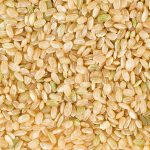
Cryptosporidiosis is a gastrointestinal infection caused by the parasitic intestinal protozoan of various Cryptosporidium spp. Cryptosporidium is of the coccidian type and is often found in food and water which has been contaminated by faeces from humans or animals (Fayer et al., 2000). It is very resistant to normal levels of chlorine treatment which is why it has risen in food safety circles as an organism of considerable concern.
Sources Of Contamination
People usually suffer cryptosporidium poisoning from swallowing contaminated water, eating contaminated food or coming into contact with contaminated faeces from cattle and wild animals. A recent Global Enteric Multi-Centre Study estimates that cryptosporidiosis is associated with a significant increase in the risk of death in children aged 12–23 months in impoverished communities (Kotloff et al., 2013).
Infection was first documented in 1976 and since then has been associated with gastrointestinal illness especially in immunocompetent and immunodeficient patients. It causes extreme discomfort through gastroentric disease. Most infection leads to watery diarrhoea with varying degrees of abdominal cramps, nausea, vomiting and bouts of fever. Anorexia is also associated with the disease. For those who are immunocompetent, cryptosporidiosis is a self-limiting illness but for those who are immunocompromised as in those with AIDS or cancer, the infection can be uncurable and even leads to death. The incubation period is thought to be about 10 days.
The typographical species is Cryptosporidium parvum although there are a number of other species such as C. hominis which as its species name suggests has infected humans. The genus, especially C. parvum has been well reviewed by Dawson (2005), Sunnotel et al., (2006), Robertson (2014). C. parvum has been separated into 2 genotypes which is based on sequences of the thrombospondin related adhesive protein (TRAP-C2).
Life-Cycle
The life cycle of Cryptosporidium contains a sexual and asexual type. It can be characterized in to six stages: first oocyst excystation and sporozoites formation, replication within intestine of the host, gametes formation, fertilization, oocyst and sporozoites formation (Casemore, 1990). It clearly has a complicated and complex life cycle where the protozoa binds to the surface of cells of the intestine tract before living within the cytoplasm of epithelial cells of the produces its detrimental effects. It then produces an extremely durable, environmentally stable oocyst about 4 to 6 mm in diameter. This is the part of its lifecycle that is excreted in faeces of infected animals. It is thought that the infective dose is very low: about 10 oocysts from one particular strain of C. parvum might be enough to cause infection (Okhusen et al., 1999).
Sources Of Outbreaks
Unpasteurised apple juice (CDC, 1997), ciders and other untreated beverages including milk are often media in which the oocyte is found. A number of outbreaks in the USA (CDC, 1997) are linked to roadside providers of these beverages where juice is popularly bought. This usually occurs when windfall fruit is collected that has been contaminated with faeces. Whilst transmission is by the faecal-oral route, it is believed that close contact with infected animals is more significant than with any infected food.
Water containing the oocyte can also potentially contaminate other food products although this wasn’t the case in one example (Robertson and Huang, 2012) that occurred in northern Sweden with cooked meats. That example proves to be an interesting one as to what can and cannot be contaminated as vegetables washed in unclean water will contain surface counts (Ortega et al., 1997).
The oocyte is unaffected by chlorine levels in tap water which implies it is highly resistant to many treatment conditions.
It is an organism of concern for beverage manufacturers who needed to identify the conditions required that would lead to its destruction. One finding is that the oocysts lose viability in acid pHs including carbonated beverages. Through a dye uptake study, it was noted that oocyte viability declined to 15% or less upon 24 hour exposure in carbonated beverages stored at 4 °C (Friedman et al., 1997). This compared favourably with those oocytes surviving more extensively in tap water, orange juice or a proprietary infant formula. Here the oocyte survival was around 35%.
A Lamp procedure has been successfully developed for the organism (Karanis et al., 2007).
Cryptosporidium belongs with a group of protozoan micro-organisms that cause disease including Toxoplasma, Cyclospora and Giardia (Rose & Slifko, 1999).
One of the best internet sources on the subject:
Center for Disease Control and Prevention.
References
Casemore, D.P. (1990) Epidemiological Aspects of Human Cryptosporidiosis. Epidemiol. Infect. J. 104, pp. 1-28
Centers for Disease Control and Prevention (CDC. (1997). Outbreaks of Escherichia coli O157: H7 infection and cryptosporidiosis associated with drinking unpasteurized apple cider–Connecticut and New York, October 1996. MMWR. Morbidity and mortality weekly report, 46(1), p. 4
Dawson, D. (2005). Foodborne protozoan parasites. Int. J. Food Microbiol, 103(2), pp. 207-227
Fayer, R., Morgan, U., Upton, S.J. (2000) Epidemiology of Cryptosporidium: Transmission, detection and identification. Int. J. Parasitol. 30, pp. 1305–1322.
Friedman, D.E., Patten, K.A., Rose, J.B. and Barney, M.C. (1997) The Potential for Cryptosporidium parvum oocyst Survival In Beverages Associated With Contaminated Tap Water. J. Food Safety 17 pp. 125–132. doi: 10.1111/j.1745-4565.1997.tb00181.x
Juvonen, R., Virkajärvi, V., Priha, O., & Laitila, A. (2011). Microbiological spoilage and safety risks in non-beer beverages. VTT Research Notes, 2599.
Karanis, P., Thekisoe, O., Kiouptsi, K., Ongerth, J., Igarashi, I., Inoue, N. (2007) Development and preliminary evaluation of a loop-mediated isothermal amplification procedure for sensitive detection of Cryptosporidium oocysts in fecal and water samples. Appl. Environ. Microbiol. 73(17) pp. 5660–2
Kotloff, K.L., Nataro, J.P., Blackwelder, W.C., Nasrin, D., Farag, T.H., Panchalingam, S., Wu, Y., Sow, S.O., Sur, D., Breiman, R.F., et al. (2013) Burden and aetiology of diarrhoeal disease in infants and young children in developing countries (the Global Enteric Multicenter Study, GEMS): A prospective, case-control study. Lancet 382, pp. 209–222.
Okhuysen, P.C., Chappell, C.L., Crabb, J.H., Sterling, C.R., Dupont, H.L. (1999) Virulence of three distinct Cryptosporidium parvum isolates for healthy adults. J. Infectious Diseases 180, pp. 1275– 1281
Ortega, Y.R., Roxas, C.R., Gilman, R.H., Miller, N.J., Cabrera, L., Taquiri, C., Sterling, C.R. (1997) Isolation of Cryptosporidium parvum and Cyclospora cayetanensis from vegetables collected in markets of an endemic region in Peru. American Journal of Tropical Medicine and Hygiene 57 (6), pp. 683–686
Roberston, L.J. (2014) Cryptosporidium as a Foodborne Pathogen. Springer Briefs in Food, Health and Nutrition. New York, NY, USA.
Robertson, L. J., & Huang, Q. (2012). Analysis of cured meat products for Cryptosporidium oocysts following possible contamination during an extensive waterborne outbreak of cryptosporidiosis. J. Food Protection 75(5), pp. 982-988.
Rose, J. B., & Slifko, T. R. (1999). Giardia, Cryptosporidium, and Cyclospora and their impact on foods: a review. J. Food Protection, 62(9), pp. 1059-1070
Sunnotel, O., Lowery, C.J., Moore, J.E., Dooley, J.S.G., Xiao, L., Millar, B.C., Rooney, P.J. and Snelling, W.J. (2006) Cryptosporidium. Letters in Applied Microbiology, 43 pp. 7–16. doi: 10.1111/j.1472-765X.2006.01936.x

Leave a Reply